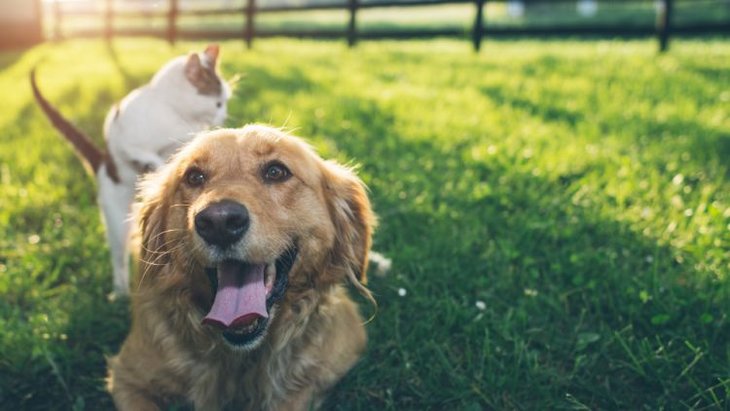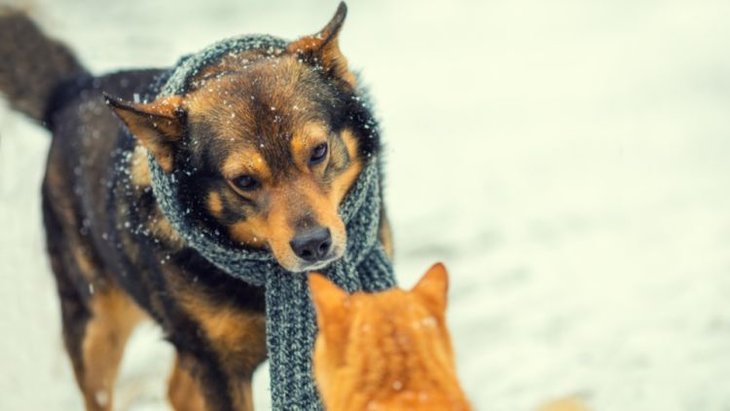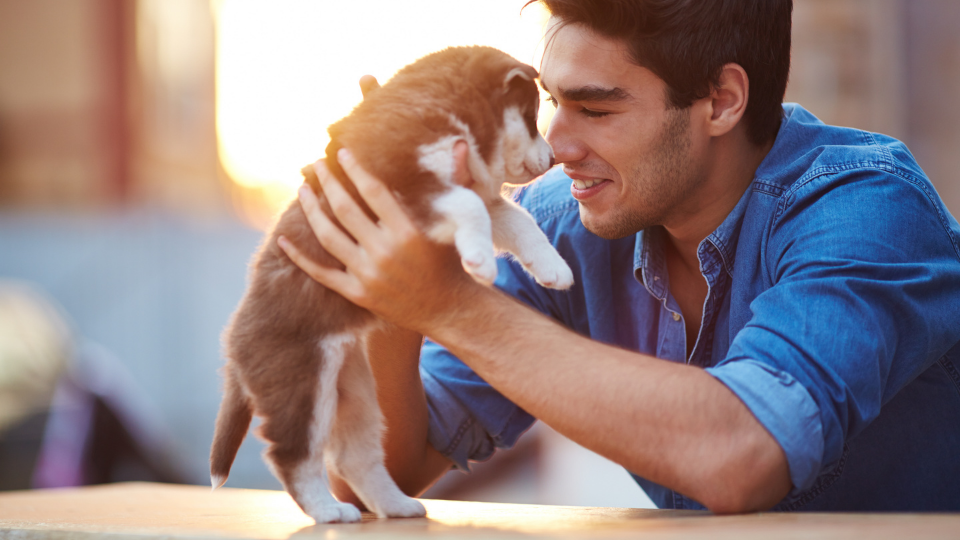When's The Best Time to Get Pet Insurance? Ask A Vet
Reviewed by Kari Steere, Licensed Insurance Producer
Contributions by Dr. Ricky Walther
If you're the proud owner of a dog or a cat, you may be wondering "When should you buy pet insurance?"
Plenty of pet parents worry that their four-legged family members are too young (or too old) for a pet insurance plan to provide substantial value. When your pet is seemingly in good health, buying an insurance plan might seem like an unnecessary cost.
But one of the things you need to consider is why people buy pet insurance in the first place: to protect against financial risk and ensure their pets have access to essential health care. In a worst-case scenario, insurance coverage could save you thousands of dollars on emergency treatment that saves your pet's life.
And while it’s always important to have, there are certain times that you might rely on your policy coverage much more than others — like during the summer or winter, when weather extremes present additional hazards for pet safety. We'll cover everything you need to know about when to get pet insurance in the sections below:
- Generally, the sooner the better
- Insuring pets for the summer
- Insuring pets for the winter
- When should you get pet insurance?
- Key Takeaways
- Frequently Asked Questions
Generally, the Sooner the Better
The best time to buy pet insurance is the day you bring home your new family member. In fact, most owners purchase pet health insurance within six months of adopting a new dog or cat.
Most people purchase pet insurance within 6 months of getting a dog or cat.
That’s because there are no pet insurance plans that cover pre-existing conditions. Getting your pet covered early on ensures that any future health development will be covered by your plan.
It also means you can start using your plan during a developmental period that requires you to go to the vet more frequently for deworming and can seek veterinary advice for your puppy throwing up or kitten sneezing without fear of treatment cost. With wellness coverage, you can also get reimbursed for vaccinations, parasite prevention, and the cost to spay a dog or cat.
While it's a good idea to consider pet insurance as soon as possible, some pet health risks are more pronounced during certain seasons, making enrollment a larger priority. For instance, your new puppy or kitten might be healthy when you bring them home, but they could develop seasonal allergies by spring. Likewise, no matter how careful you are, there’s always a risk of dehydration in the summer or hypothermia in the winter, especially if you spend a lot of time outside.
Here's a closer look at when to buy pet insurance during specific times of the year.
Insuring Pets for the Summer
Pet insurance protects you against financial risks if your pet gets sick or injured. But the best course of action is to mitigate risks before they become a factor.
Here are some pet safety hazards in the summer to be aware of, as well as some tips to keep your pet safe and healthy during the warmer months.

Overheating, Heat Stroke, and Dehydration
Heat stroke, also known as overheating or heat exhaustion, can affect pets just as it can affect humans. Heat stroke occurs when your pet’s body temperature rises above a normal range, usually reaching 100 degrees Fahrenheit or higher.
Dogs and cats have very few sweat glands. Instead, dogs cool off by radiating heat from their mouths and by absorbing coolness from cold surfaces. Cats lick themselves to cool off their bodies in a similar way to how humans do with sweat, but they can also sprawl out on cold surfaces to cool down.
The clearest sign of heat stroke in dogs is excessive panting. Drooling, vomiting, loss of consciousness, and uncoordinated movement are also symptoms in both animals.
To prevent heat stroke, ensure your pet has access to plenty of cool water. Keep them out of enclosed areas like cars and make sure they have a shady spot to cool off in.
If your pet shows signs of heatstroke, immediately move them to a cool and shaded area, pour cool (not cold) water over them, and allow them to drink small amounts of water. If they don’t improve, call your vet or an emergency pet line.
Sunburnt Skin and Blistered Paw Pads
Many pet owners don’t realize it, but dogs and cats can get sunburn just like humans. It’s also important to pay attention to their paws in the summertime, as hot sand and asphalt can cause them to burn and blister.
Apply pet sunscreen to protect them from the sun and don’t forget to cover their nose. You can also dress them in protective outerware if the clothes are light enough prevent overheating.
If your pet shows signs of sunburn or blistered paw pads, call your vet. You can use cool compresses and ointments to care for your pet as well.
Fleas, Ticks, and Insect Bites or Stings
Fleas, ticks, and other insects tend to be more active in the summer months. But in some parts of the country, they are active year-round.
Fleas and ticks aren’t just an annoyance if they get into your home or your pets’ fur. They can also cause serious illnesses, like Lyme Disease, if their bite leads to infection.
If you have a pet wellness plan with your insurance provider, you may have coverage for flea and tick control. Your vet can recommend medications and other solutions to help prevent flea and tick bites. Most pet insurance policies also cover accidents and injuries, so you’ll be covered if your pet suffers a severe bite that requires veterinary attention.
Dangerous Seasonal Plants and Predators
Pets can suffer from rashes and allergic reactions to summer plants like poison ivy and poison sumac. There are also seasonal plants that are toxic to pets upon consumption, such as:
- Autumn crocus (Colchicum autumnale)
- Azalea/rhododendron (Rhododendron species)
- Castor bean (Ricinus communis)
- Foxglove (Digitalis species)
- Lilies (Lilium species) - cats only
- Lily of the Valley (Convallaria majalis)
- Oleander (Nerium oleander)
- Sago palms (Cycads, Macrozamia, and Zamias)
- Yesterday, Today, and Tomorrow (Brunfelsia species)
- Yew (Taxus species)
Common signs of pet poisoning include nausea, vomiting, convulsions, and diarrhea. If you believe your pet has swallowed something poisonous, the Pet Poison Helpline suggests you remove your pet from the area, make sure your pet is still breathing and acting normally, then call their hotline at (855)-764-7661 if they don’t improve.
Pets can also fall victim to seasonal predators in the summer. For example, coyotes are a serious risk to cats, whereas snakes are known to bite both cats and dogs if they're encountered.
Keep your pets closely supervised during the summertime to defend against predatory attacks. Contact a vet immediately if you believe they’ve been injured by another animal.
Water Hazards
Many dogs love to cool off with a swim when it's hot outside, but it’s crucial to supervise pets in the water. An estimated 5,000 family pets drown in backyard swimming pools each year.
5,000 pets
drown in swimming pools every year
Not all dogs are “natural-born swimmers,” so always acclimate them to the water slowly. You can also equip your pet with a life jacket or keep them leashed to ensure they stay safe.
Dogs who visit the beach for the first time may attempt to drink seawater if they aren’t hydrated, which can make them sick. Make sure your dog has a ready supply of safe water while at the beach.
Pets can also encounter harmful bacteria, toxic algae, and parasites like giardia when drinking from contaminated water sources. Pay attention to water advisories in your area and get your pet emergency help if they show signs of distress after going for a swim.
Insuring Pets for the Winter
Most pet parents tend to keep their furry family members inside during the winter. But even a small amount of exposure to cold weather can be a risk if the temperature gets low enough.
If you have pet insurance, you’ll have coverage for most of the emergencies you might encounter during the winter. Here’s what to look out for.

Hypothermia and Frostbite
Dogs and cats grow thick fur coats in the winter months to protect themselves from the cold, but they are not invulnerable to hypothermia (extreme loss of body heat) and frostbite (frozen skin tissue).
Protect your dog’s paws in winter so they don’t become dry or frostbitten by training them to wear protective boots whenever they go outside. To prevent frostbite in cats, limit their exposure outdoors. Only allow your pet to be in the cold for short periods to keep their body temperature from dropping too quickly.
Injured Paw Pads and Dry, Irritated Skin
When it’s cold and there’s snow on the ground, it becomes harder for pets to move around. This can lead to injuries. Make sure your pets have a clear path to run and play and ensure there aren’t any hazards hiding in the snow.
Winter boots can also protect your dog’s paw pads from drying out. For irritation, it’s safe to put Vaseline on dogs’ paws as a treatment to give them relief. In the case of severe irritation that involves cracked paw pads or bleeding, putting Vaseline on your dog’s paws might be enough, so contact your veterinarian.
Obesity and Weight Gain
The prevalence of obesity in pets is determined by how much exercise they get and how much food they eat. Lack of exercise, an increase in the intake of food and treats, and the inability to go outside during the cold months can contribute to weight gain. Over the long term, this can lead to the possible development of diabetes, arthritis, and other health risks.
Make sure your pets have a balanced diet and get plenty of exercise during the cold months. And while it may be tempting to slip some holiday goodies under the table, only do so with food that is safe for your pet, and only in moderation.
Accidental Poisoning
Accidental poisoning becomes more of a hazard during the holidays because of the presence of sugary treats and chocolate, which is poisonous to dogs. According to the ASPCA, chocolate poisoning accounts for 10.7% of the cases received by Animal Poison Control Center (APCC).
Household holiday plants like holly, mistletoe, poinsettia, pine, and peppermint can also lead to pet poisoning incident if consumed. Be sure to keep these plants out of reach of your pets or avoid keeping them in your home altogether.
Keep an eye out after walking a dog on streets in cold regions, as well. Anti-freeze chemicals used to de-ice streets may be licked off paws and ingested, leading to accidental poisoning.
Other Holiday Hazards Around the Home
Other hazards can harm your pets during the holiday season. Cooked bones can splinter and become choking hazards, as can ornaments and other small decorations. Electrical sockets, wires, batteries, open-flame candles, and broken wine glasses also pose potential risks to your pets.
Take care when feeding your pets meat or other foods that may contain bacteria. To avoid a potential health incident, consult a veterinarian before feeding pets raw meat or any other food that you aren’t sure about.
Final Verdict: When Should You Get Pet Insurance?
Dangerous incidents occur more often in the summer and winter months, leading to a spike in insurance claims. However, depending on where you live, they may be common health risks for your pets any day, any time of year.
Getting your pet insured while they are young will give you more lifetime value for your pet insurance. It will also give you more financial protection if they develop a serious health condition. Although a routine visit to the vet is affordable for many pet parents, emergency surgery can cost as much as $5,000 out of pocket.
An accident and illness pet insurance plan will cover a percentage of your vet bills, so you’ll only have to pay for a fraction. For example, if you have a pet insurance plan that covers 90% of your veterinary costs, you’d only be out $500 after the insurance company reimburses you (after your deductible is met).
Of course, the biggest advantage of pet insurance is that it will give you peace of mind. You’ll ensure your pet always has access to the best veterinary care, and you’ll prevent them from developing a pre-existing condition that isn’t covered by your pet insurance.
Some people can predict the future.For everyone else, there's pet insurance.
Key Takeaways
- The best time to buy pet insurance is when your pet is young and in good health, so that future conditions that may arise down the road can be covered under the policy.
- Owners should consider enrolling their pet in an insurance policy before summer or winter to get coverage protection in time for the health risks presented by weather hazards.
- Pawlicy Advisor makes it easy to compare the lifetime cost of a policy, allowing you to worry less about when to get pet insurance for the most value.
Questions & Answers
When does pet insurance actually kick in?
All pet insurance plans require a waiting period before they go into effect. The length of your pet insurance waiting period depends on the brand of insurance you get. Most pet insurance waiting periods last about 14 days, although some plans have shorter waiting periods for their accident coverage when compared to their illness coverage.
Still, it’s best to sign up for pet insurance before the winter and summer months arrive, so you know your pet will be protected when they are most at risk.
When can you get pet insurance?
Unlike human health insurance in the United States, you can sign up for pet insurance at any time. Enrollment is open all year, and that’s true of all pet insurance companies.
Pet insurance providers do set minimum age requirements, however. Most won’t cover a pet until it is a certain age, typically between six and 10 weeks old.
Can you get pet insurance for an older dog?
Yes, you can get pet insurance for older pets, but you’ll need to pay attention to the insurance plan you choose. Some providers may not provide insurance for pets above a certain age, while others may only offer limited coverage.
When shopping for pet insurance through Pawlicy Advisor, make sure you read the Coverage Details section of your quote to determine what’s covered under your plan.
When should you hold off on enrollment?
Most people find that pet insurance is a great decision for their circumstances, but that's not to say it's for everybody. You might want to wait on purchasing pet insurance if your pet has an upcoming surgery scheduled or because they recently became ill or injured, as coverage only applies to new health conditions that arise in the future.
But if the cost is a concern, know that pet insurance is generally affordable, and it will be worth it if you need to use your coverage for a costly treatment. According to Pawlicy Advisor’s research, average monthly premiums are just $29 for a cat and $47 for a dog. You can get plans that cost even less per month by opting for accident-only coverage.
Where to buy pet insurance?
Remember, the best time for you to get pet insurance coverage is today. And you don’t need to go far to get it.
At Pawlicy Advisor, you can compare pet insurance plans and receive custom quotes from the best pet insurance providers in the industry through our free plan comparison service. Just enter some information about you and your pet, then search for a plan that suits your needs and budget.
Do you want to find the best pet insurance?
Let's analyze your pet's breed, age, and location to find the right coverage and the best savings. Ready?
Analyze My PetAbout Pawlicy Advisor
The pet insurance marketplace endorsed by veterinarians, at Pawlicy Advisor we make buying the best pet insurance easier. By comparing personalized coverage and pricing differences we can save you a ton of money, up to 83% in some instances!
Instantly Compare Pet Insurance Plans
Guides
Determine If Pet Insurance Is Worth It
Comparison Charts
Find Your State
Dog Insurance
Pawlicy Advisor is the #1 pet insurance marketplace in the U.S. Recommended by veterinarians. Trusted by 1M+ Americans. Our team of veterinary advisors and licensed insurance experts are dedicated to helping pet parents give their dogs and cats the best possible care.
